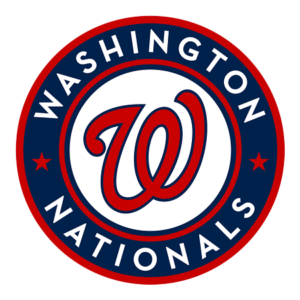
A common question that comes up across all levels of play is what is WHIP in baseball? How is it different from ERA? Whether you are looking at elite MLB pitchers or just trying to understand the Game Changer stats for your child’s travel ball game, it’s important to understand the difference in the baseball stats. WHIP stands for walks plus hits per inning pitched. ERA stands for earned run average. We’ll get into how you calculate both stats below.
What is WHIP in Baseball?
So, when you ask what is WHIP in baseball, first the acronym stands for walks and hits per inning pitched. Sounds pretty simple unlike some other baseball acronyms and stats. WHIP is a calculation of the number of baserunners allowed by a pitcher per inning of work. The lower the number, the better.
The way to calculate the metric is to add the total number of baserunners allowed by a pitcher and divide by his or her number of innings pitched. At the MLB level, a WHIP of less than 1.000 is Cy Young Award worthy. So, when you look at the stat holistically, WHIP is the opposite goal of a batter’s on base percentage. The lower the WHIP, the lower the OBP of an opposing team. WHIP is a quick way to see how successful a pitcher is against opposing hitters.
How Do You Calculate the WHIP Baseball Stat?
The formula to calculate WHIP is pretty straight forward. WHIP = (number of walks + number of hits) / innings pitched. If a pitcher throws a partial inning, say 5 1 / 3 (ie got one out in the sixth inning), then you convert that to decimal form. So 5.1 or 5 1 /3 innings = 5.33 for WHIP calculations. Similarly, 5 2 / 3 or 5.2 is 5.67. So, if I pitched 10 innings and gave up 3 walks and two hits, the WHIP calculation is: WHIP = 10 / (3 + 2) = 10 / 5 = 2.00
What is a Good WHIP for MLB?

So, this is an important distinction. MLB WHIP is much lower than you are normally going to see in most youth levels of play to include high school baseball. You see more walks, hit-by-pitches, etc there. If you check out the current MLB WHIP leaders, you’ll see Ranger Suarez (six games into the 2024 season) has a ridiculous 0.63 WHIP.
If you look at Blake Snell’s 2023 Cy Young campaign, you’ll notice that his WHIP was so-so due to all the walks he gave up when pitching for the Padres. He had a WHIP bordering on average of 1.189 for the season. So far in 2024 before he went on the injured list, his WHIP jumped to a whopping 1.971 pitching for the Giants!
Here’s a good range of metrics once pitchers have enough work done in a season you can use (for MLB):
- < 1.00 – If done for a season, the pitcher is likely winning the Cy Young award or in the top few in the league.
- 1.01-1.20 – Above average for MLB pitchers.
- 1.21-1.40 – Average for MLB pitchers. The league average tends to be around 1.3-1.35.
- 1.41-1.60 – Below average for MLB. If you are doing fantasy baseball or other games, you will want to dig into the pitchers other stats to see if they are someone you should look at based on what you are doing. (IE ERA, strikeouts, etc).
- > 1.60 – This is a sign that the pitcher is not performing at the MLB level. It could be that they are hurt, need to move to the bullpen, or go back to the minors for a bit.
How is WHIP Different from ERA?
So, the next question is how is WHIP different from ERA (earned run average)? So, what I do is think of WHIP as the ability of a pitcher to limit baserunners. Walks are evil at all levels of pitching. It does not take into account a pitcher’s ability to limit damage once runners get on base. ERA measures the pitcher’s ability to prevent runs (not from errors). It gives you a view of how the pitcher keeps the other team from scoring once they get runner’s on base. Used together, they can better tell you the entire story of how a pitcher is doing.
How Do You Calculate the ERA Baseball Stat?
ERA (earned run average) is a baseball stat that the lower it is the better the pitcher has performed. The formula to calculate ERA is: ERA = # Earned Runs (ER) / Number of Innings Pitched (IP) x 9 (for MLB). If you are calculating ERA for high school baseball then you would use 7 as the final multiplier. ERA is the measure of earned runs given up per complete regulation game. Any runners that are left on base when a pitcher leaves a game mid-inning count against their ERA.
Any runs that come from a defensive or fielding error or passed ball are unearned runs. They are not used in the ERA calculation. Other than these cases; however, ERA does not take into account how good or bad a pitcher’s supporting cast is in the field. For example, a batter hits a ball that an above average outfielder could run and catch in the air. If your fielder doesn’t get there in time (but not close enough to be an error), then it will ultimately count against the pitcher if a run is scored. That’s why looking at all of the stats together is the best practice when evaluating pitchers.
What is a Good ERA in MLB?
What constitutes a “good ERA” in MLB has changed over the years. Right now, an ERA under 4.0 is good. So you can look at it like this:
- < 3.0 – Elite. Likely competing for the Cy Young award.
- Between 3.0 and 4.0 – Above average
- 4.0 – 5.0 – Starting to get into below average territory
- > 5.0 – There is likely either an injury or a need to have the pitcher go back to the minor leagues.
What is WHIP?
So, for those who prefer to see a video on what WHIP is, here you go.


